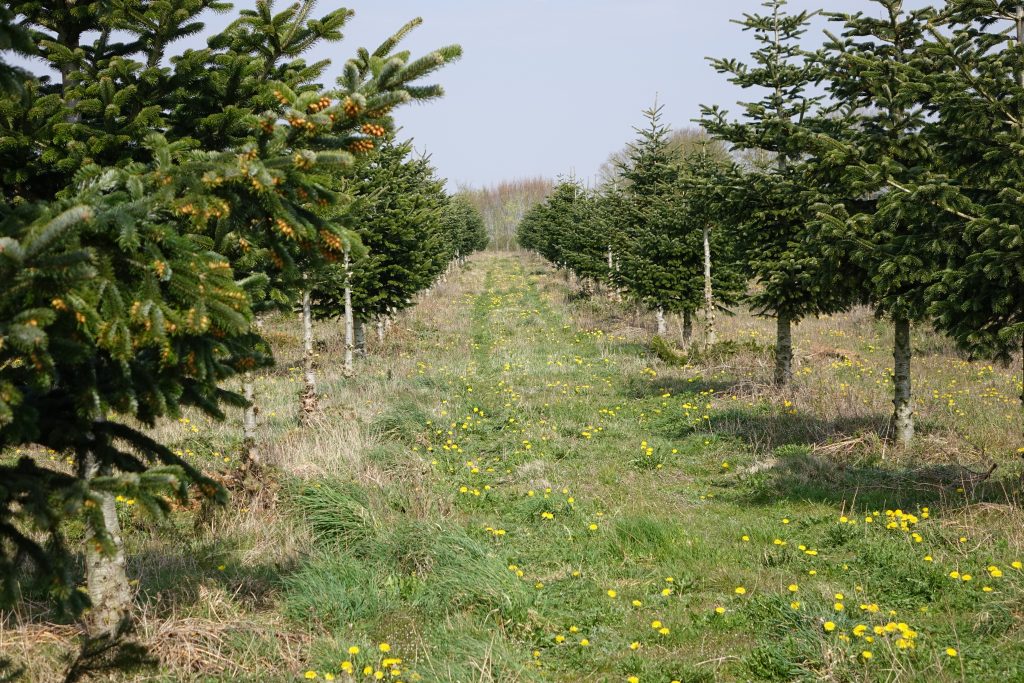The seed orchard consists of 10 carefully selected clones from the Tversted pool, which are believed to originate from the Borjomi area in Georgia. Based on a selection of plus trees in the seed breeding stands Tversted F526 and Tversted F527, the clone seed orchards Silkeborg Nordskov FP259 and Mosemarkskov FP251 were established in the 1990s. In the 2000s, testing of each individual clone was used to learn more about the respective properties, and on that basis, the 10 clones that produce the highest proportion of prime trees were selected. This clone seed orchard is therefore referred to as a 1.5 generation seed plantation.
The clones in the nursery have all been tested and the offspring of the nursery have significantly improved properties compared to the stands Tversted F526 and F527 and an even further improvement compared to Silkeborg Nordskov FP259 and Mosemarkskov FP251.
All in all, you should expect a significantly better and more uniform average shape of the trees and slightly less growth power and therefore also less need for regulation and shaping. The trees also become slightly narrower and have a slightly later emergence than the offspring from Ambrolauri, Georgia. In the selection, emphasis is also placed on the post-harvest quality and thus the risk of needle loss after felling is reduced.
Progeny trial set up and measured by Kbh. University across 4 locations in Denmark with very different soil types shows that this genetics is superior to trees grown from seeds from Ambrolauri regardless of location type. In this context, the value of 1 ha in a cycle is documented to be 30% higher.

